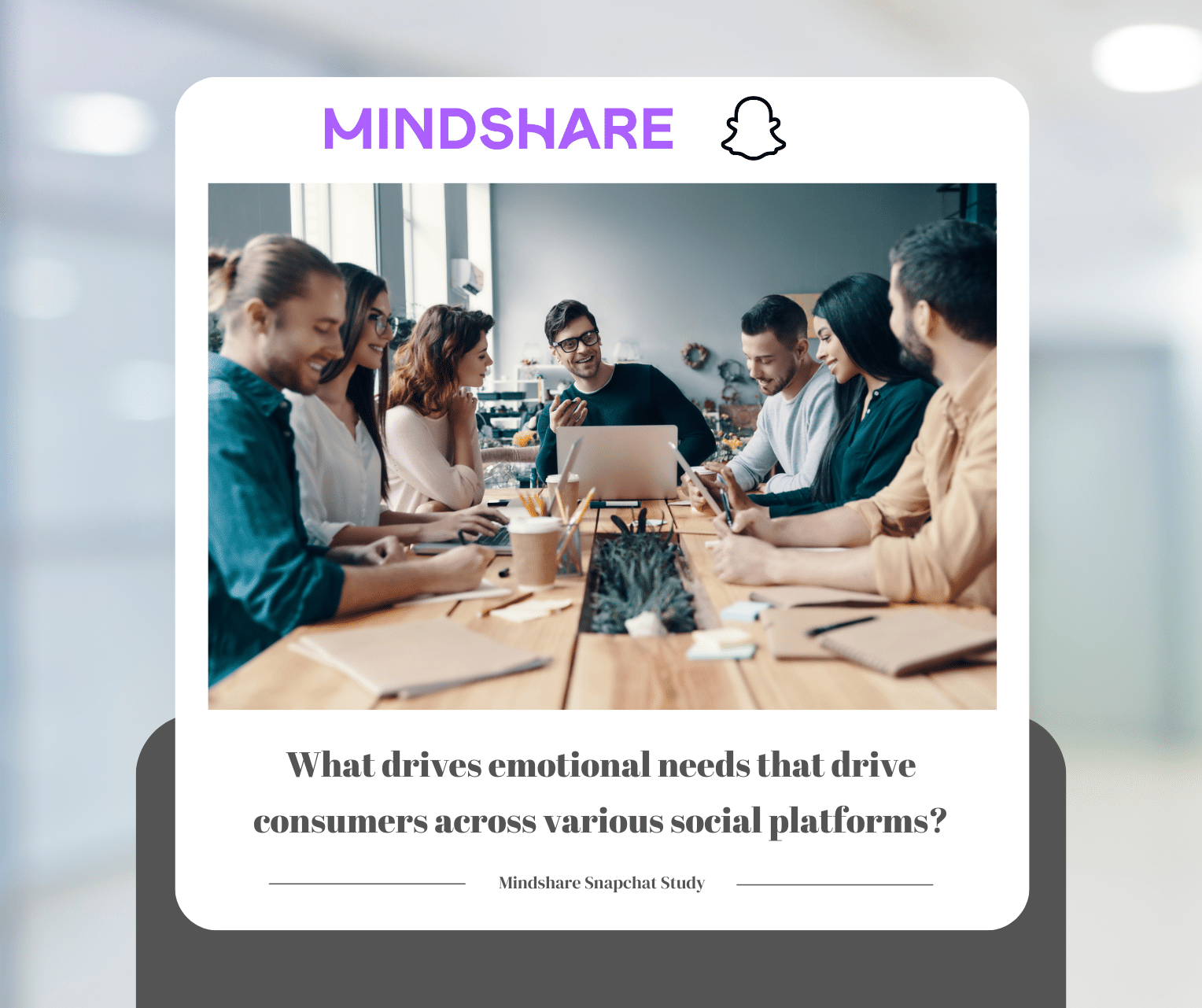
In a groundbreaking collaboration, Mindshare, the media services company under the WPP umbrella, and technology giant Snapchat have delved into the intricate world of social media behavior, revealing the subconscious associations that users have with different platforms. The research, conducted in two phases, sheds light on the emotional needs that drive consumers across various social platforms.
The first part of the study, spearheaded by Mindshare’s Worldwide Data Strategy and Insight team, involved a quantitative survey of over 28,000 adults worldwide. This phase focused on understanding consumers’ daily social media behaviors. The second part, conducted by Mindshare’s in-house neuroscience department, the NeuroLab team, delved into the deeper realms of consumers’ unconscious preferences, exploring emotional associations and perceptions tied to different social platforms.
The findings of this comprehensive study unveiled a compelling segmentation of social media behavior, identifying six distinct platform “need states” governing users’ actions:
- Exploring (22%): Users with an openness to new experiences and a penchant for discovering new places.
- Learning (16%): Individuals who find happiness in expanding their knowledge base.
- Progression (15%): Users driven by the desire to build their future and move up in the world.
- Joy (19%): Specifically seeking fun, upbeat moments and experiences.
- Hanging Out/Time Waste (15%): Those passing the time in their day-to-day lives.
- Connection (13%): Users leveraging social technology to share their lives with family and friends.
These need states displayed significant variations across different markets, reflecting the cultural nuances of each region. Notably, the United Kingdom and the United States predominantly perceive social media as a space for entertainment, while emerging markets like India view it as a source of progression. Turkey, the Netherlands, and France place emphasis on exploration and learning, and in Germany, consumers primarily see platforms as tools for changing opinions.
Glen Parker, Head of Data Strategy and Insights at Mindshare Worldwide, emphasized the simplicity yet power of these underlying needs, stating, “A few simple but powerful needs underpin all social behaviour. They are to explore, learn, to connect, to progress, to have fun or just to waste time. This knowledge is the key to unlocking the true power of social media.”
The study didn’t stop there. It correlated these need states with generational preferences and social platforms, revealing insightful nuances in engaging diverse audiences. For instance, Gen Z values Progression the most, while the Post War generation (ages 78-98) finds it the least relevant. However, the needs for Connection and Joy increase with age, highlighting a shift in preferences across generations. Mindshare’s NeuroLab conducted Implicit Association Testing (IAT) as part of the study, quantifying consumers’ subconscious beliefs. This segment aimed to understand the behaviors that set 10 well-known social platforms apart, aligning consumer needs with platform strengths and behaviors. For example, Snapchat was most associated with learning and delivering feelings of joy, Instagram with exploration and recognition, and LinkedIn with building connections and careers.
Terence Scroope, Executive Director of Customer Strategy at Mindshare, stressed the importance of tailoring media strategies to align with the unique need states of each platform. “By tailoring media strategies to align with the unique need states of each platform, we can build programs that truly resonate with different audiences and make a meaningful impact across a wide range of markets,” he said.
Alexander Dao, Global Head of Agency Development & Sales Partnerships at Snap Inc., echoed the sentiment, emphasizing the positive influence of joy Snapchatters feel while using the app on how they view business messages. “The findings from our research with Mindshare reinforce the fact that the joy Snapchatters feel when using the app influence how they view business messages in a positive way, ultimately driving business outcomes for brands.”
Methodology